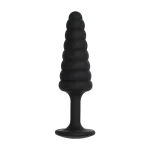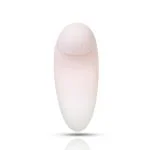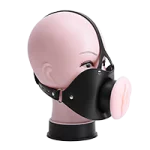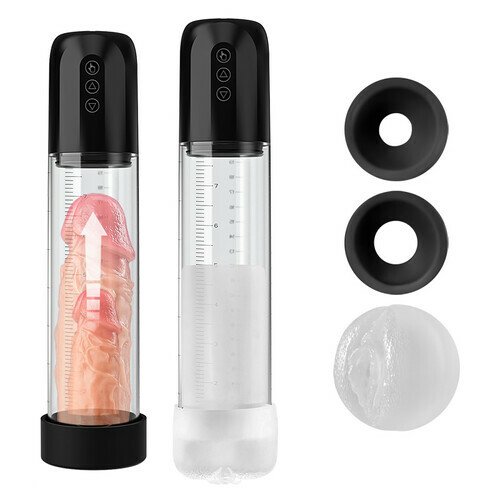Elevated cortisol levels caused by stress can lead to facial puffiness, swelling, and skin changes. There are a variety of health conditions and lifestyle factors that can lead to increased cortisol, as well as tips for reducing this effect.
Each hormone in our body serves a specific function for our body, from energy to stress levels. Cortisol is one of the hormones that plays a key role in how our bodies respond to stress, and too much cortisol can cause a variety of health problems, including changes in facial appearance. This change is called “cortisol face” and is characterized by a puffy, rounded face. In this article, we’ll explore what cortisol is, how it affects the body, and proactive steps to manage your cortisol face.
What is cortisol and how does it work?
Cortisol is a hormone produced by the adrenal glands that affects a variety of body functions, including blood pressure, metabolism, and immune response. The pituitary gland is located in the brain and regulates the amount of cortisol released by the adrenal glands. Its main purpose is to help the body manage stress, but it also plays a role in maintaining overall health.
blood sugar
Cortisol regulates blood sugar levels by breaking down fat and limiting glucose uptake by muscle and fat tissue, helping to preserve energy during stressful situations.
stress response
Cortisol, known as the “stress hormone,” is released when the body is stressed. It prepares the body for “fight or flight” mode by increasing energy levels, narrowing blood vessels, and slowing digestion.
inflammation
Cortisol helps prevent inflammation by inhibiting substances that trigger the inflammatory response, which is why corticosteroids are often used to treat inflammation. However, cortisol levels that are too high or too low can also promote cortisol production.
metabolism
In summary, cortisol helps your body stay active by managing how and when your body uses glucose, fat, and protein for fuel. Over time, however, too much cortisol can lead to problems like weight gain or insulin resistance.
blood pressure
Cortisol helps maintain blood pressure by regulating blood vessels’ response to hormones and keeping blood flowing normally. However, just like metabolism, too much cortisol can have negative effects, leading to long-term high blood pressure.
sleep and energy levels
Cortisol levels are highest in the morning (waking you up) and lowest in the evening (helping you relax). This circadian rhythm can help regulate sleep, mood, and energy.

Symptoms of high cortisol levels
When cortisol levels remain elevated, the body may experience a variety of negative symptoms, including:
- Weight gain, especially in the abdomen (“cortisol belly”)
- acne
- thinning of skin
- muscle weakness
- slow healing
- severe fatigue and irritability
What is cortisol face (aka “moon face”)?
Cortisol face, or “moon face,” refers to facial puffiness or bloating caused by chronically high cortisol levels. The accumulation of fat or fluid makes the face appear rounded.
Common Causes of Cortisol Facial
- autoimmune disease (e.g. lupus, Addison’s disease)
- blood disorders (e.g. anemia)
- certain cancers (e.g. lymphoma, blood cancer)
- inflammatory diseases (e.g. asthma, arthritis)
- long-term use of corticosteroids (This can impair adrenal function and increase cortisol levels)
- Cushing’s syndrome (A condition in which the body produces too much cortisol, leading to weight gain, swelling, and a rounded face)
6 factors that affect cortisol
While these more serious health conditions often cause elevated cortisol levels, they can also be affected by everyday factors.
- diet
Foods high in sugar and saturated fat raise cortisol levels. In contrast, a balanced diet of fruits, vegetables, and whole grains can support healthy cortisol levels. Reducing caffeine intake, especially at night, can also help regulate cortisol and improve sleep.
- sleep
Lack of sleep increases cortisol levels, putting additional stress on the body. Consistent sleep habits can promote recovery and control cortisol levels.
- pressure
Emotional and physical stress can increase cortisol levels. Chronic stress can damage the body, so managing it is crucial to overall health.


- exercise
Regular exercise helps reduce and maintain healthy cortisol levels, promoting better sleep and mental health. However, excessive exercise can put a lot of stress on the body, so moderation is key.
- drug
Medications such as hydrocortisone, prednisone, and birth control pills can alter cortisol levels. If you are concerned that your medication is causing your cortisol levels to rise, discuss this with your healthcare provider.
- environment
Living in a dry environment increases cortisol production. Likewise, extreme temperatures can affect cortisol levels, and a comfortable environment can reduce cortisol production.
How to Manage and Treat Cortisol Facial
If you have facial cortisol issues (and any other symptoms it may bring), there are a number of things you can do to lower your cortisol levels and reduce facial puffiness:
- Reduce salt intake: Too much salt can cause water retention, leading to facial puffiness. According to the FDA, limit sodium intake to 2,300 mg or less per day.
- Increase water intake: Staying hydrated helps rid the body of excess sodium and helps reduce swelling.
- Get quality sleep: A full night’s sleep gives the body time to recover and regulate cortisol levels. Aim to get at least seven to eight hours of sleep each night.
- Reduce stress: Activities like yoga, meditation, or reading before bed can help you relax and manage stress levels.
- A healthy and balanced diet: Whole foods support overall health and regulate hormone levels. It also provides many nutrients that fight toxins that may affect high cortisone levels.
- take HUM about energy: Über Energy helps boost energy throughout the day with adrenal support. It also helps support high levels of stress when it does occur, naturally lowering cortisol levels.
- Try lymphatic massage: Lymphatic drainage massage can reduce fluid buildup and promote better circulation. These massages are easy to do yourself at home.
- Practice deep breathing: Deep breathing exercises can help reduce stress and lower cortisol.
takeout
Cortisol is essential for stress management and overall health, but when levels are consistently elevated, it can lead to problems like cortisol facial. The causes stem from underlying health problems or long-term use of corticosteroids, as well as lifestyle factors such as diet, sleep and stress. Managing your cortisol face requires taking long-term steps to heal your body from the inside out. However, with a few lifestyle adjustments, you can help control your cortisol levels and reduce the appearance of a cortisol face.


 Anal Beads
Anal Beads Anal Vibrators
Anal Vibrators Butt Plugs
Butt Plugs Prostate Massagers
Prostate Massagers
 Alien Dildos
Alien Dildos Realistic Dildos
Realistic Dildos
 Kegel Exercisers & Balls
Kegel Exercisers & Balls Classic Vibrating Eggs
Classic Vibrating Eggs Remote Vibrating Eggs
Remote Vibrating Eggs Vibrating Bullets
Vibrating Bullets
 Bullet Vibrators
Bullet Vibrators Classic Vibrators
Classic Vibrators Clitoral Vibrators
Clitoral Vibrators G-Spot Vibrators
G-Spot Vibrators Massage Wand Vibrators
Massage Wand Vibrators Rabbit Vibrators
Rabbit Vibrators Remote Vibrators
Remote Vibrators
 Pocket Stroker & Pussy Masturbators
Pocket Stroker & Pussy Masturbators Vibrating Masturbators
Vibrating Masturbators
 Cock Rings
Cock Rings Penis Pumps
Penis Pumps
 Wearable Vibrators
Wearable Vibrators Blindfolds, Masks & Gags
Blindfolds, Masks & Gags Bondage Kits
Bondage Kits Bondage Wear & Fetish Clothing
Bondage Wear & Fetish Clothing Restraints & Handcuffs
Restraints & Handcuffs Sex Swings
Sex Swings Ticklers, Paddles & Whips
Ticklers, Paddles & Whips



















